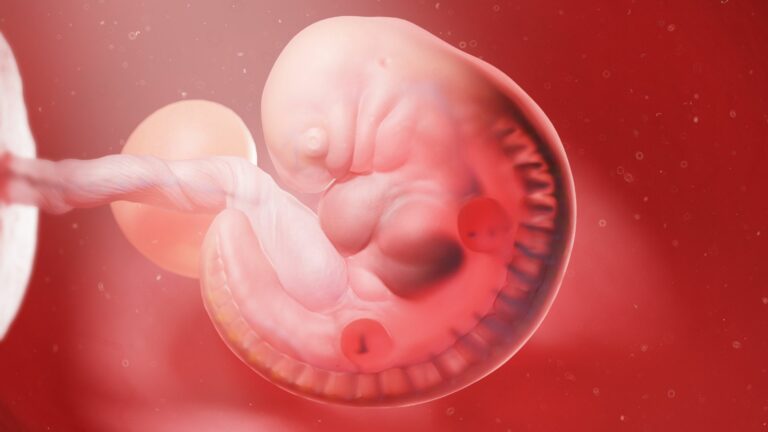
For individuals and couples undergoing in vitro fertilization (IVF) in India, one of the most critical decisions is determining the optimal number of embryos to transfer.
This choice involves weighing various factors, including age, embryo quality, previous IVF history, risks of multiples, personal preferences, and financial considerations.
In this comprehensive guide, we’ll explore these factors in depth to help you make an informed decision in partnership with your fertility specialist.
Key Takeaways:
| Insight | Implication |
|---|---|
| Female age and ovarian reserve significantly impact the recommended number of embryos to transfer. | Women under 35 may transfer 1-2 embryos, while those over 40 may need to transfer 4 or more. |
| Blastocyst-stage embryos and PGT-A testing can improve implantation rates, potentially allowing for fewer embryos per transfer. | Discuss blastocyst transfer and PGT-A with your doctor to see if they align with your needs and budget. |
| Previous IVF cycles, whether successful or unsuccessful, provide valuable insights for optimizing future transfer strategies. | Gathering past IVF records and discussing them with your doctor is crucial for personalizing your treatment plan. |
| Multiple pregnancies carry significant maternal and neonatal health risks compared to singleton pregnancies. | Carefully consider the potential challenges and complications associated with twins or higher-order multiples. |
| Personal preferences, values, and emotional readiness play a vital role in deciding the number of embryos to transfer. | Open communication with your partner and doctor is essential for aligning your transfer strategy with your goals. |
| The number of embryos transferred can significantly impact the overall cost of IVF treatment. | Request a detailed cost breakdown and explore financing options to manage the expenses associated with your chosen transfer strategy. |
Understanding the Impact of Age and Ovarian Reserve
Female age and ovarian reserve are two of the most significant factors influencing the recommended number of embryos for transfer. Here’s what you need to know:
The Age Factor
- Fertility Decline: Fertility naturally decreases with age due to a decline in both egg quantity (ovarian reserve) and quality. Older eggs have a higher chance of chromosomal abnormalities, which can lead to failed implantation, miscarriage, or birth defects.
- Age-Based Transfer Guidelines: The Indian Society of Assisted Reproduction (ISAR) reports the following general guidelines for the number of embryos to transfer based on age: Age Range Recommended Number of Embryos Women under 35 1-2 embryos Women 35-37 2-3 embryos Women 38-40 3-4 embryos Women above 40 4 or more embryos, depending on individual circumstances
- Live Birth Rates: ISAR data indicates that live birth rates per embryo transfer decline with age: Age Range Approximate Live Birth Rate 30-34 30-35% 35-39 25% 40+ Further reduced success rates
Ovarian Reserve Assessment
- Ovarian Reserve Tests: Your doctor will assess your ovarian reserve through tests like Anti-Mullerian Hormone (AMH) and Antral Follicle Count (AFC). Lower AMH and AFC generally indicate a lower egg supply, which may necessitate transferring more embryos.
- Personalizing Transfer Decisions: Your doctor will interpret your AMH and AFC results in conjunction with your age to guide recommendations for the number of embryos to transfer.
Ask Yourself: How does my age and ovarian reserve impact the recommended number of embryos for transfer in my situation?
Choosing the Strongest Contenders: Embryo Quality and Development
The quality and developmental stage of your embryos also play a crucial role in determining the optimal number for transfer.
Blastocyst vs. Cleavage-Stage Embryos
- Embryo Development Stages:
- Cleavage-stage embryos: Reach the 2-3 cell stage by day 3 after fertilization.
- Blastocysts: Develop further into a hollow ball of cells with an inner cell mass and outer trophectoderm by day 5 or 6.
- Cleavage-stage embryos: Reach the 2-3 cell stage by day 3 after fertilization.
- Blastocyst Transfer Advantages:
- More closely resembles natural implantation timing
- Potentially higher pregnancy rates with fewer embryos transferred
- Allows for better selection of high-quality embryos
- More closely resembles natural implantation timing
Deciding on Embryo Stage for Transfer:
Your doctor will recommend transferring either cleavage-stage or blastocyst embryos based on factors like:
- Your age
- Embryo development and quality
- Number of available embryos
- Personal preferences
Preimplantation Genetic Testing for Aneuploidies (PGT-A)
- What is PGT-A?
- Advanced genetic test that analyzes embryos for chromosomal abnormalities (aneuploidies) before implantation
- Helps select embryos with the highest chance of successful implantation
- Can lead to fewer transfers and a higher chance of pregnancy while reducing miscarriage risk
- Advanced genetic test that analyzes embryos for chromosomal abnormalities (aneuploidies) before implantation
- Who Might Benefit from PGT-A?
- Women over 35
- Those with a history of miscarriages
- Individuals with known genetic disorders
- Women over 35
- Considerations:
- Adds additional cost to IVF treatment
- May not be suitable for everyone
- Discuss with your doctor to see if it aligns with your needs and budget
- Adds additional cost to IVF treatment
Tips for Optimizing Embryo Selection:
- Discuss your preferences for blastocyst transfer and PGT-A openly with your doctor.
- Understand the costs associated with blastocyst transfer and PGT-A to make informed financial decisions.
- Don’t hesitate to ask your doctor for clarification on any aspect of embryo development, blastocyst transfer, or PGT-A.
Resources for Further Learning:
- Indian Council of Medical Research (ICMR) guidelines for ART clinics: https://www.icmr.nic.in/
- Educational resources from the Fertility Society of India: [the fertility society of india ON The Fertility Society of India fertilityindia.org]
Learning from Your Journey: Previous IVF History
If you’ve undergone prior IVF attempts, your doctor will carefully analyze those outcomes to guide the current decision on the number of embryos to transfer.
- Success Stories: If you achieved pregnancy in a previous cycle, your doctor will aim to replicate that approach, potentially transferring a similar number of embryos.
- Addressing Challenges:
- In case of past implantation failure or miscarriage, your doctor might:
- Transfer fewer embryos to minimize the risk of multiples
- Investigate the cause of implantation failure through additional testing
- Transfer fewer embryos to minimize the risk of multiples
- For unexplained infertility, reviewing past responses to IVF stimulation and embryo transfer can help your doctor tailor the current cycle for optimal results.
- In case of past implantation failure or miscarriage, your doctor might:
Step-by-Step Guide for Leveraging Previous IVF History:
- Gather all medical records related to previous IVF cycles, including:
- Medications used
- Number of embryos transferred
- Test results
- Medications used
- Discuss any concerns or questions you have regarding past IVF experiences and how they might influence the current cycle.
- Partner with your doctor to understand how your unique medical history shapes the embryo transfer decision.
Resources for Understanding IVF Success Rates in India:
- National Registry of Assisted Reproductive Technology: https://www.icmr.nic.in/
- Indian Society for Assisted Reproduction: https://www.isarindia.net/
Weighing the Potential Outcomes: Risks of Multiple Pregnancy
While twins or higher-order multiples can be a joyous surprise, it’s crucial to understand the potential risks involved for both mother and babies.
Maternal Health Risks:
| Risk | Implication |
|---|---|
| Gestational diabetes | Increased blood sugar levels during pregnancy |
| Preeclampsia | High blood pressure and potential organ damage |
| Preterm labor | Contractions and cervical changes before 37 weeks |
| Cesarean delivery | Surgical delivery, often necessary with multiples |
Neonatal Risks:
| Risk | Implication |
|---|---|
| Premature birth | Birth before 37 weeks, leading to various complications |
| Low birth weight | Breathing difficulties, feeding problems, developmental delays |
| Infections | Higher susceptibility due to immature immune systems |
| Long-term health concerns | Potential learning disabilities, vision problems, and other challenges |
Emotional and Logistical Impact:
Raising multiples can be incredibly rewarding but also comes with significant challenges:
- Increased financial expenses for childcare, diapers, formula, and other necessities
- Higher demands on parental time and energy
- Potential strain on emotional well-being and relationships
Resources for Understanding Multiple Pregnancy Risks:
- American Society for Reproductive Medicine (ASRM) patient education resources on multiple pregnancy risks, translated into Hindi: [American Society for Reproductive Medicine ON asrm.org]
- Federation of Obstetric and Gynaecological Societies of India (FOGSI) insights on the Indian context: https://www.fogsi.org
Share Your Thoughts: How do you feel about the potential risks and challenges associated with a multiple pregnancy? What support systems would you have in place?
Aligning Your Choices with Your Goals: Personal Preferences and Values
Ultimately, the decision about the number of embryos to transfer is deeply personal. Consider your hopes, anxieties, and emotional readiness for a multiple pregnancy.
Factors to Reflect On:
- Desire for Multiples:
- Do you envision having twins or triplets?
- Are you solely focused on achieving a singleton pregnancy?
- Do you envision having twins or triplets?
- Emotional Preparedness:
- Are you emotionally equipped to handle the potential challenges of a multiple pregnancy?
- Increased prenatal care visits
- Higher complication risks
- Demands of caring for multiple newborns
- Increased prenatal care visits
- Are you emotionally equipped to handle the potential challenges of a multiple pregnancy?
- Religious or Ethical Considerations:
- Do any religious or ethical beliefs influence your views on transferring multiple embryos?
Tips for Navigating Personal Preferences:
- Have open, honest conversations with your partner about your individual feelings and reach a decision together.
- Consider seeking counseling if you’re struggling with the decision or have anxieties about multiples. A therapist can provide a safe space to explore your feelings.
- Research online resources or support groups for families with multiples to better understand the realities of raising multiples.
Resources for Guidance on Personal Preferences:
- Resolve: The National Infertility Association: resolve.org
- American Psychological Association: [Decision Making in Health Care – American Psychological Association apa.org]
Understanding the Costs Involved: Financial Considerations
The number of embryos transferred can significantly impact the overall cost of IVF treatment.
Cost Breakdown of IVF:
| Expense Category | Examples |
|---|---|
| Medications | Ovarian stimulation drugs, injections |
| Monitoring | Ultrasounds, blood tests |
| Procedures | Egg retrieval, embryo transfer, PGT-A |
| Laboratory | Embryo culture, cryopreservation |
Impact of Multiple Embryo Transfers:
- Higher chance of pregnancy in a single cycle, but also a higher risk of multiple pregnancy
- Potential additional expenses with multiples:
- Increased prenatal care visits
- Higher-risk delivery (e.g., cesarean section)
- Significant costs of raising multiples (childcare, supplies, etc.)
- Increased prenatal care visits
Step-by-Step Guide for Managing IVF Costs:
- Request a detailed cost breakdown from your IVF clinic, including:
- Cost per cycle
- Additional charges for procedures like PGT-A
- Potential variations based on the number of embryos transferred
- Cost per cycle
- Explore financing options:
- Payment plans offered by the clinic
- Loans or grants from fertility organizations
- Crowdfunding platforms
- Payment plans offered by the clinic
- Investigate insurance coverage:
- Check if your insurance plan offers any coverage for IVF
- Understand the specific criteria and limitations of coverage
- Check if your insurance plan offers any coverage for IVF
Resources for Understanding IVF Costs in India:
- Indian Society for Assisted Reproduction: https://www.isarindia.net/
- Federation of Obstetric and Gynaecological Societies of India: https://www.fogsi.org
A Collaborative Approach: Your Doctor’s Personalized Recommendations
Choosing the number of embryos to transfer is a crucial decision best made in partnership with your doctor.
They will take a holistic approach, considering:
- Your age and ovarian reserve
- Embryo quality and development
- Previous IVF history
- Risks of multiple pregnancy
- Personal preferences and values
- Financial considerations
Strategies for Effective Communication with Your Doctor:
- Ask questions: Seek clarification on any aspect of the decision-making process.
- Express concerns: Openly share your hopes and preferences regarding the number of embryos to transfer.
- Seek understanding: If you don’t grasp a specific medical term or recommendation, ask your doctor to explain it in simpler terms.
- Trust expertise: While being involved in decision-making, trust your doctor’s professional guidance based on their experience and knowledge.
Resource for Improving Doctor-Patient Communication:
- The Fertility Society of India offers valuable guidance on communicating effectively with your fertility specialist: [the fertility society of india ON The Fertility Society of India fertilityindia.org]
IVF Centers in India
Below are 10 IVF centers across various cities in India:
- IVF Centers in Agra
- IVF Centers in Amritsar
- IVF Centers in Bhubaneswar
- IVF Centers in Coimbatore
- IVF Centers in Gwalior
- IVF Centers in Jamnagar
- IVF Centers in Kochi
- IVF Centers in Madurai
- IVF Centers in Navi Mumbai
- IVF Centers in Srinagar
Conclusion
Deciding how many embryos to transfer is a complex and personal choice that requires careful consideration of multiple factors.
By understanding the impact of age, embryo quality, previous IVF history, risks of multiples, personal preferences, and financial implications, you can make an informed decision in collaboration with your doctor.
Key Reminders:
- This guide is intended for educational purposes and should not replace personalized medical advice.
- Always consult with your qualified fertility specialist to determine the best course of treatment for your unique situation.
- Open communication with your partner and doctor is essential throughout the decision-making process.
We’d love to hear from you! Share your experiences, questions, or insights in the comments below. Your story could help others navigating similar decisions on their IVF journey in India.






